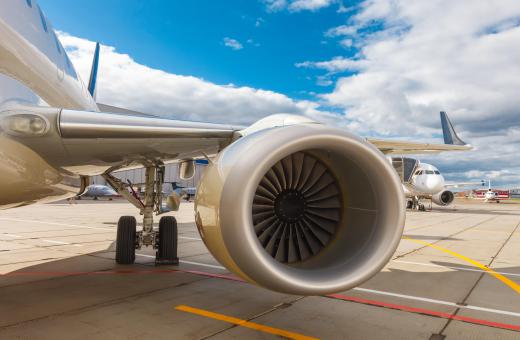A compressor surge is flow through a compressor that is against the direction of flow during normal operation or an oscillating flow in both directions. The surge can result in a condition known as compressor stall, which stops the compressor and can cause serious damage. In the case of turbine engines, like jet airplane engines, a surge which results in a stall can cause the engine to stop, or even fail, if damaged. This failure is known to have been the cause of a number of plane crashes, including the famous emergency ditching of a US Airways A320 jet in the Hudson River near Newark, New Jersey in 2009. Compressor surge is also a phenomenon known to automotive engineers and enthusiasts as it can occur in turbochargers in automobile engines.
Aircraft engines, particularly turbines and jet engines are most frequently the subject when discussing compressor surge. A number of conditions can lead to this phenomenon, but it primarily occurs under conditions in which the compressor is overloaded beyond its ability to move more air. Essentially, the back pressure of the compressed air that is expelled from the compressor exceeds the maximum capacity of the compressor. This causes a sudden and violent back flow of air in the opposite direction of the normal flow. Depending on the severity of the surge and other conditions, this can result in a series of oscillating flows back and forth through the compressor or cause the compressor to stop or fail.

When a jet engine experiences a compressor surge, the violent reversal of airflow usually results in a loud banging noise and an expulsion of air or gout of flame from the engine intake. This can damage the engine and cause complete engine failure. In less severe cases, it simply results in engine stall or sputtering. Early jet engines experienced this phenomenon more often due to primitive fuel delivery systems. As conditions that cause compressor surge build and approach a critical point, modern jet engines have automatic systems in place to meter fuel delivery to help prevent surges. Debris, extreme conditions, or other equipment failures can still cause a compressor surge, however.

For auto enthusiasts, the phenomenon of compressor surge as experienced by a turbocharger results in a "chattering" sound from the engine. This is actually a series of banging noises at a rapid frequency as the exhaust gases in the turbocharger oscillate, causing the mechanism to stop and start or to speed up and slow down, resulting in a very uneven delivery of boost, or power. The phenomenon can occur in any closed system employing a compressor with a flow in a specific direction under normal operation. Any build up of pressure against the direction of flow that causes a reversal of that flow through a compressor can be called a compressor surge.
